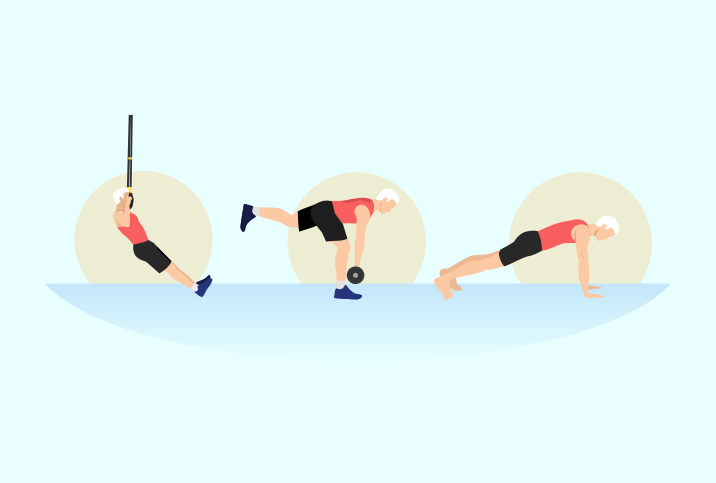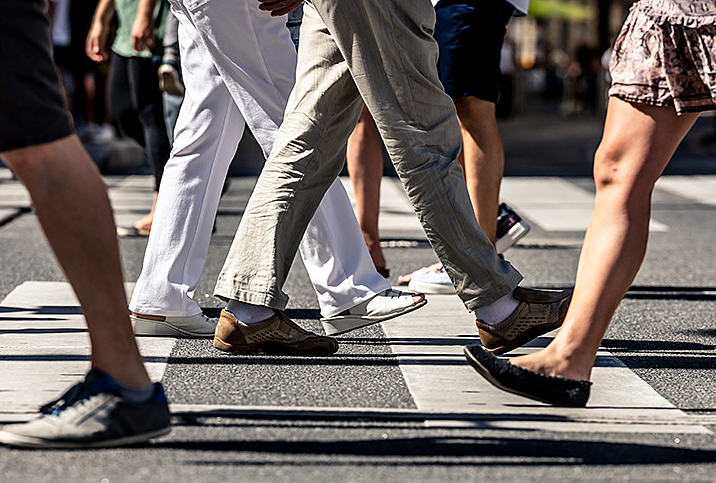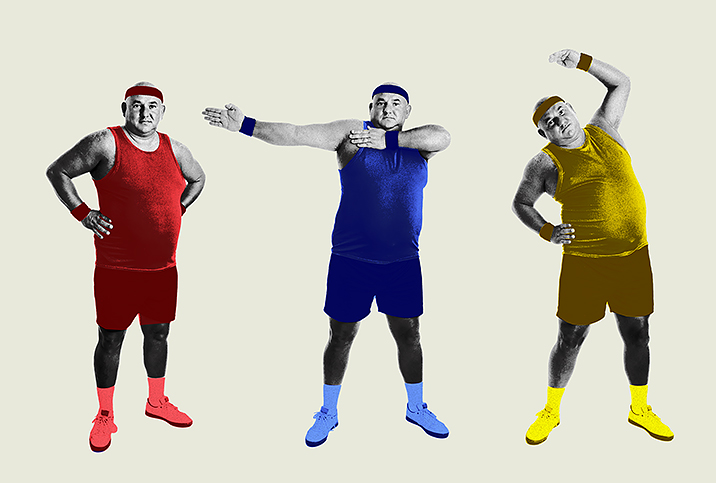Can You Walk Your Way to a Better Erection?

Seeking to improve your sex life as the new year kicks into gear? This one isn't all that difficult. Resolve to walk your way to better erections.
Men who experience erectile dysfunction (ED), the consistent inability to get or maintain an erection satisfactory for sexual intercourse, may benefit from incorporating more heart-pumping physical activity—as little as a 30-minute walk—into their 2023 routine.
More than 30 million men in the United States experience ED, which can lead to higher rates of depression and anxiety. ED is generally seen as a growing public health concern. But a portion of ED sufferers may be able to improve their condition by simply adding extra steps to their daily life.
Medical conditions such as cardiovascular disease, the leading cause of death in men, produce changes to the penis's blood flow and are common causes of ED, as blood flow is necessary to achieve and sustain an erection. Without the need of a doctor or a prescription, better sexual health may literally be around the corner for men who resolve to lace up their sneakers and head outdoors.
A better erection could be just a few steps away
Walking, one of the most popular forms of exercise in the world, is also one of the cheapest. No gym membership required.
Increasing your daily steps can be as easy as parking farther away from entrances or opting to take the stairs rather than the elevator. As little as 40 minutes of moderate to vigorous exercise four days a week—a grand total of 160 minutes—sustained over the course of six months can improve ED caused by physical inactivity, obesity, hypertension, metabolic syndrome and/or cardiovascular disease, according to a 2018 systematic review that looked at a decade of erectile dysfunction research.
Moderate exercise can be achieved by walking briskly at a pace of 4 mph or bicycling at a pace of 10 to 12 mph, according to Harvard research. Another Harvard study found walking 30 minutes a day was linked with a 41 percent decline in risk for ED.
Considering the leading causes of ED are atherosclerosis (hardening of the arteries) and diabetes, additional physical activity may improve more than just erectile function.
People who took 12,000 steps a day had a 65 percent lower risk of dying over the course of 10 years compared with those who took 4,000 steps a day, one 2020 study found.
"Higher step counts were also associated with lower rates of death from heart disease and cancer," the study stated.
Quitting smoking or vaping and reducing alcohol consumption in the new year may also lead to better performance in the bedroom. Heavy smokers, even younger ones, are twice as likely to develop ED than their nonsmoking peers.
Heavy drinking doesn't help, either. One study found men's "episodic erectile failure" occurred at "significantly higher" rates in those consuming more than three standard units of alcohol a day. One standard unit is any drink that contains 14 grams of alcohol, according to the National Institute on Alcohol Abuse and Alcoholism.
A healthy weight is important for sexual health
The risk of developing ED and losing sexual function increases along with a man's waistline, according to Harvard research. A man with a 42-inch waist is 50 percent more likely to have ED than one with a 32-inch waist.
Regular physical activity such as walking can aid vascular health. It helps arteries by boosting nitric oxide production, thereby increasing blood flow to the penis and making it easier to get an erection.
One of the first suggestions Susan MacDonald M.D., a urology specialist at Penn State Health in Hershey, Pennsylvania, offers her male patients is to lose a little weight.
"There is an obesity epidemic in America, so odds are most of your readers have five to 10 pounds to lose," MacDonald said. "If they were to start walking, that would help."
Quitting smoking is another one of her top recommendations for men experiencing ED.
"If we're making New Year's resolutions here, stopping smoking is a huge one," MacDonald said. "I think if you're smoking, you're paying double, because you're paying for the cigarettes and you're paying for [medication] to fix the erectile dysfunction it's causing."
Symptoms of erectile dysfunction should be taken seriously because a man's penile dysfunction may be the first red flag of other illnesses and disorders, she said.
"In most cases, it's the disease process leading to the ED," MacDonald said. "In cardiovascular disease, we see the ED before we see the heart attack."
Walking can curb more than erectile dysfunction
Walking has been proved to lower blood pressure, ease joint pain, curb sweet-tooth cravings and improve sleep. It can also help ward off breast cancer, heart disease, stroke, and early onset Alzheimer's disease and dementia.
During peak flu and cold seasons, walking is another way to boost your immune system to fend off germs. It can increase bone health and bone density in osteoporosis patients and improve a person's balance.
In addition to physical benefits, walking can offer mental health perks, such as improving feelings of sadness, anxiety, anger and depression.
But as with anything, the trick to picking up a new exercise habit is to do so safely.
Anyone taking to the streets should map out a path in advance, use sidewalks when possible, choose a well-lit area, be aware of major changes in the weather, stay hydrated and wear bright, reflective clothing. If sidewalks are unavailable, public school tracks and indoor shopping malls can be additional areas to squeeze in a little extra physical activity.
Be sure to consult a primary doctor before making changes to your diet and exercise routine.
If lifestyle and diet changes improve your overall health but erectile dysfunction persists, even intermittently, a wearable device free of the negative side effects of medication may help restore sexual function. Eddie® is an FDA-registered Class II medical device designed to treat erectile dysfunction and improve male sexual performance. Its specific shape optimizes blood flow as it puts pressure on the veins of the penis but not the arteries.


















